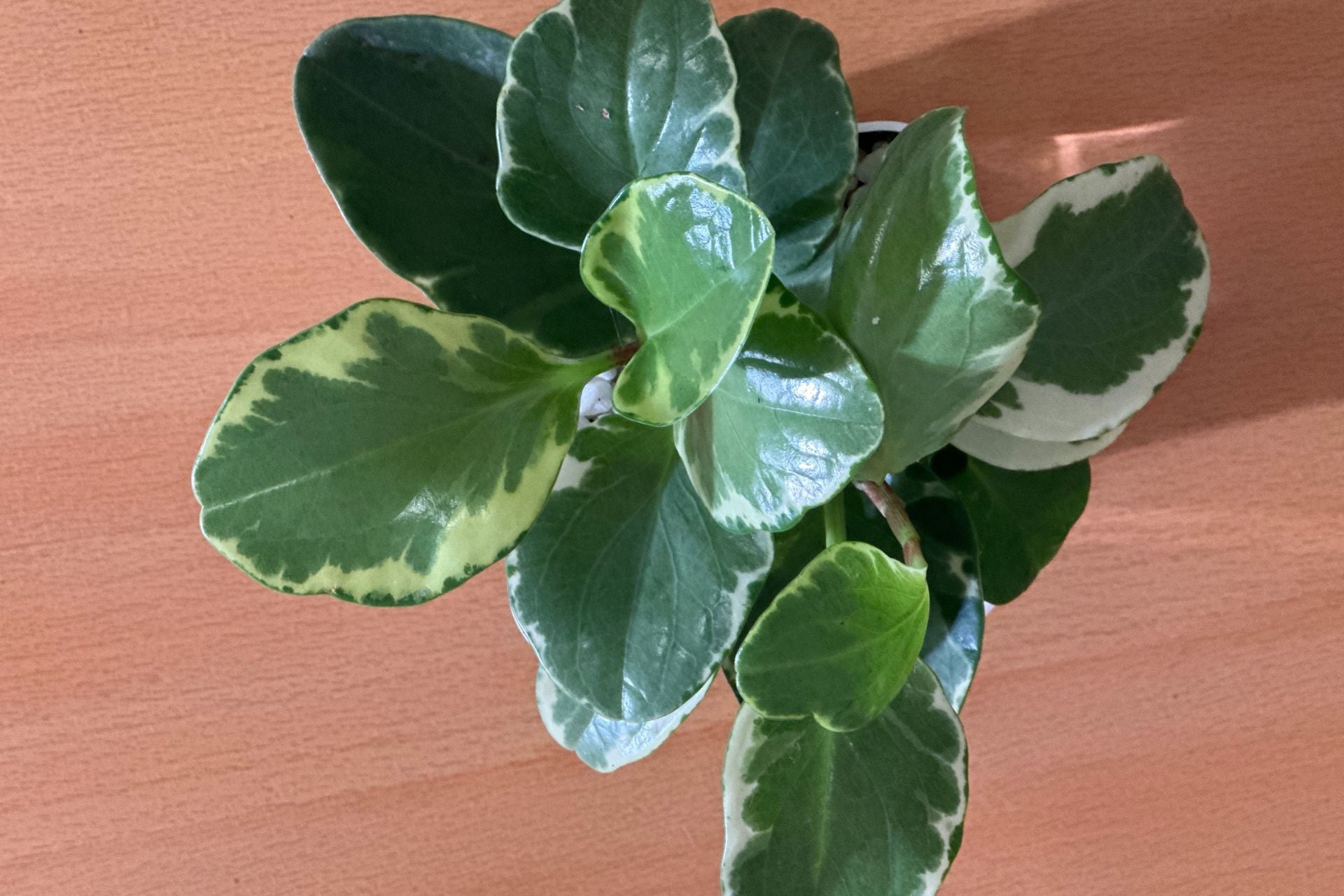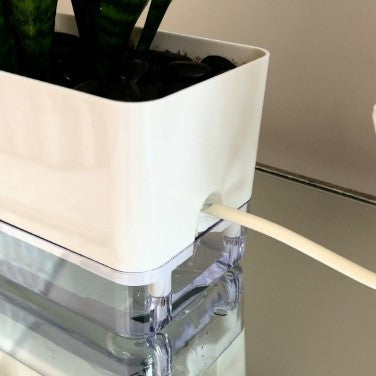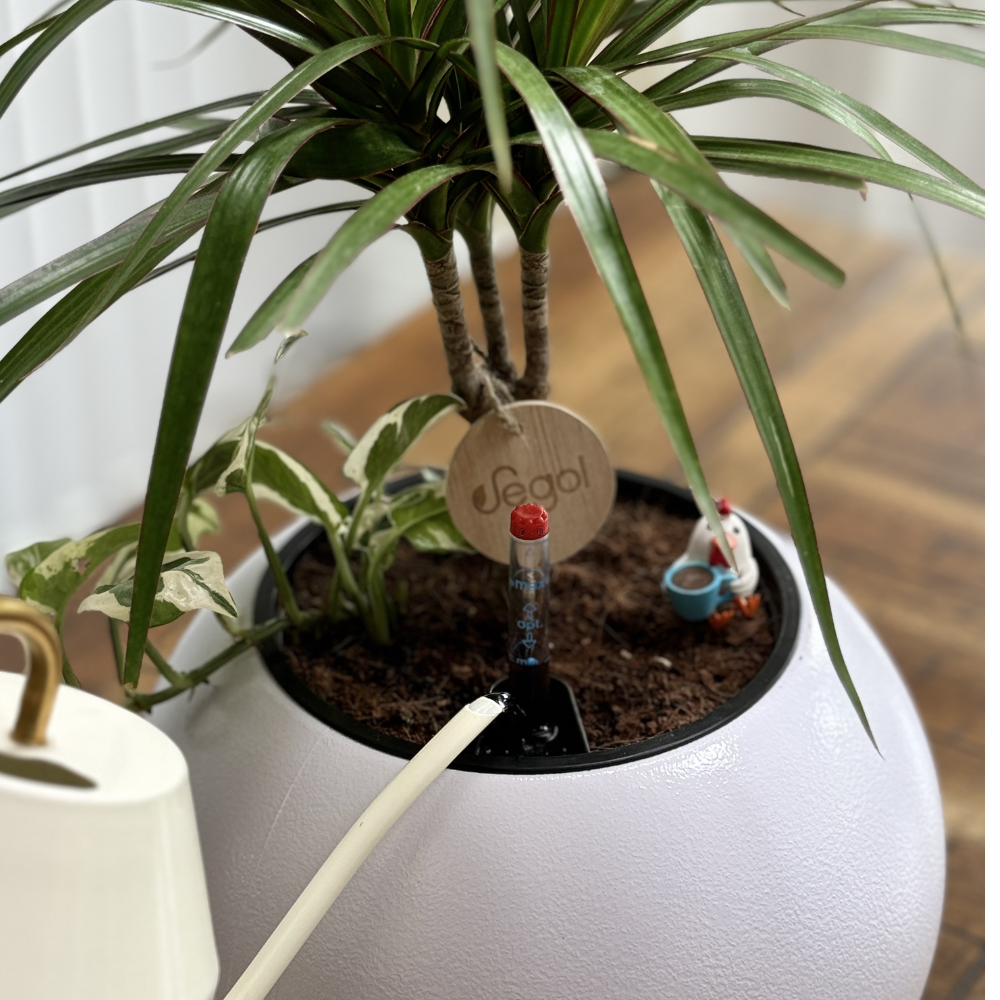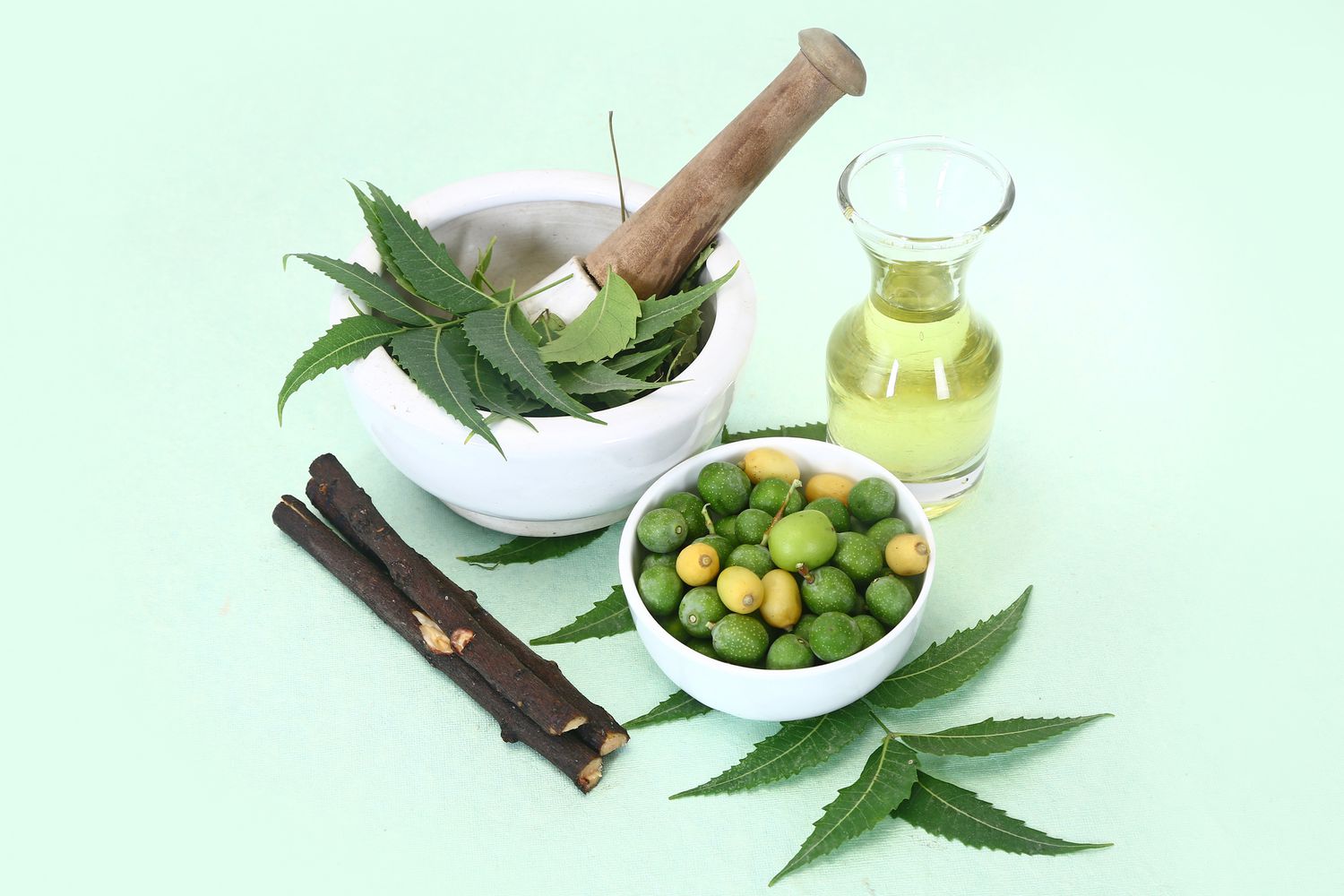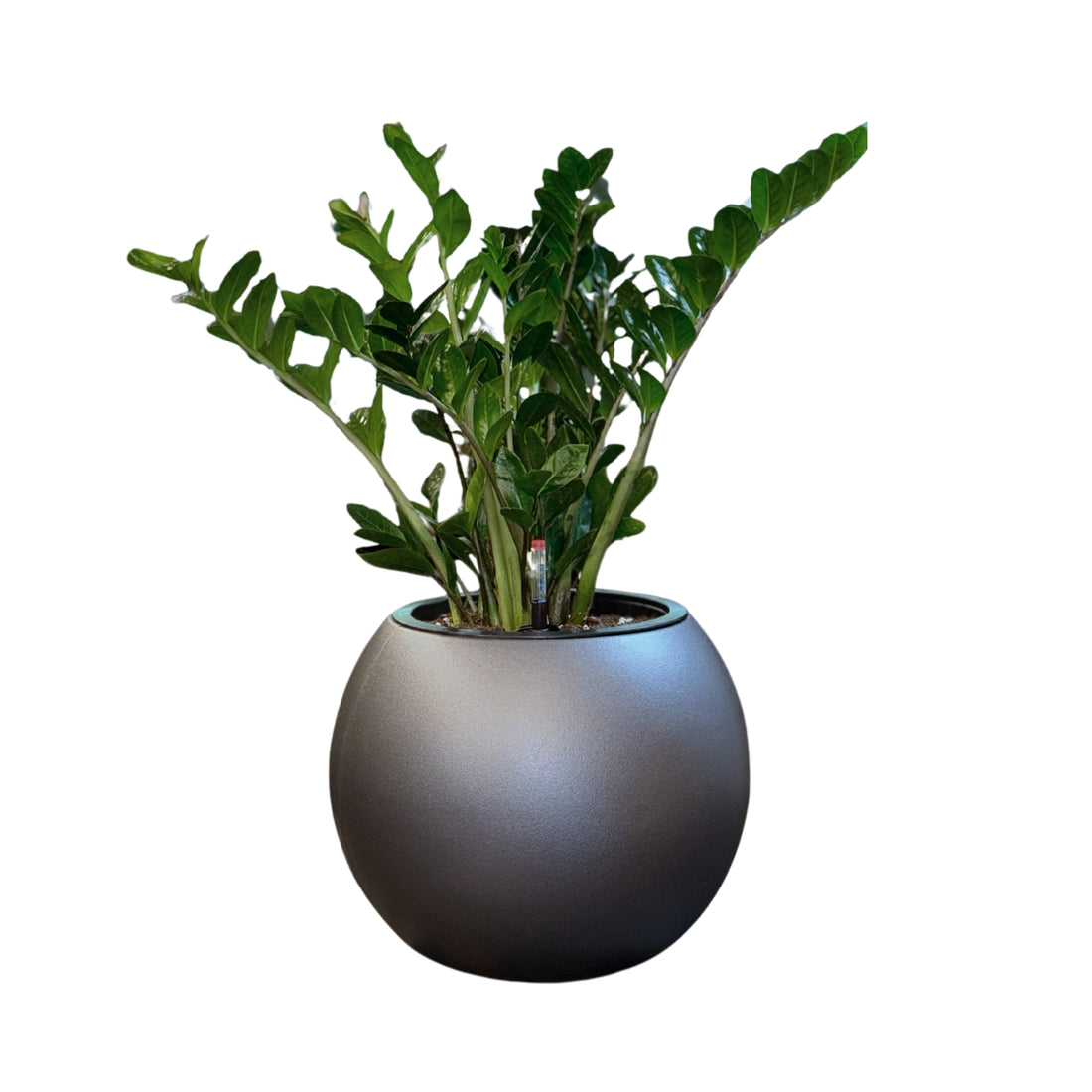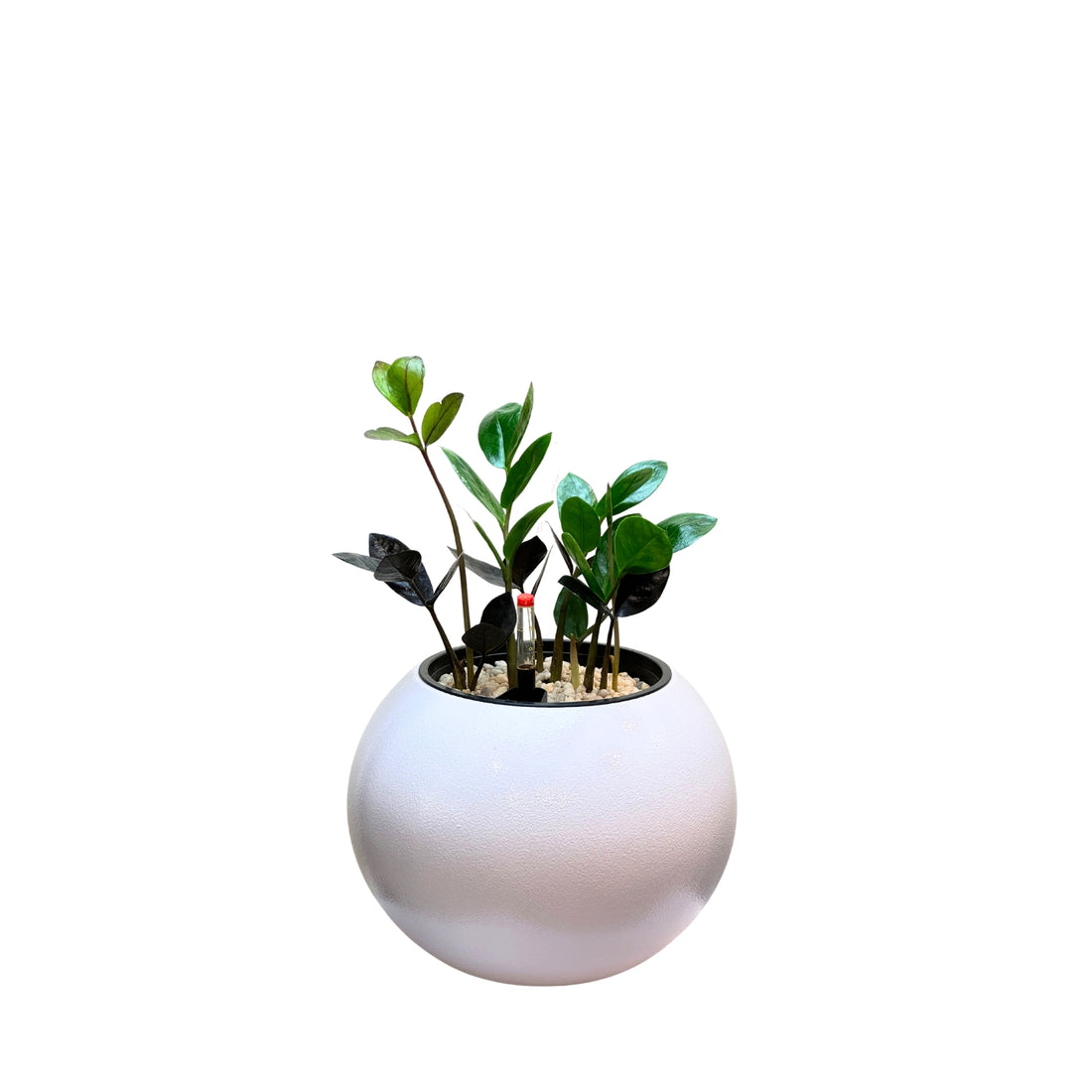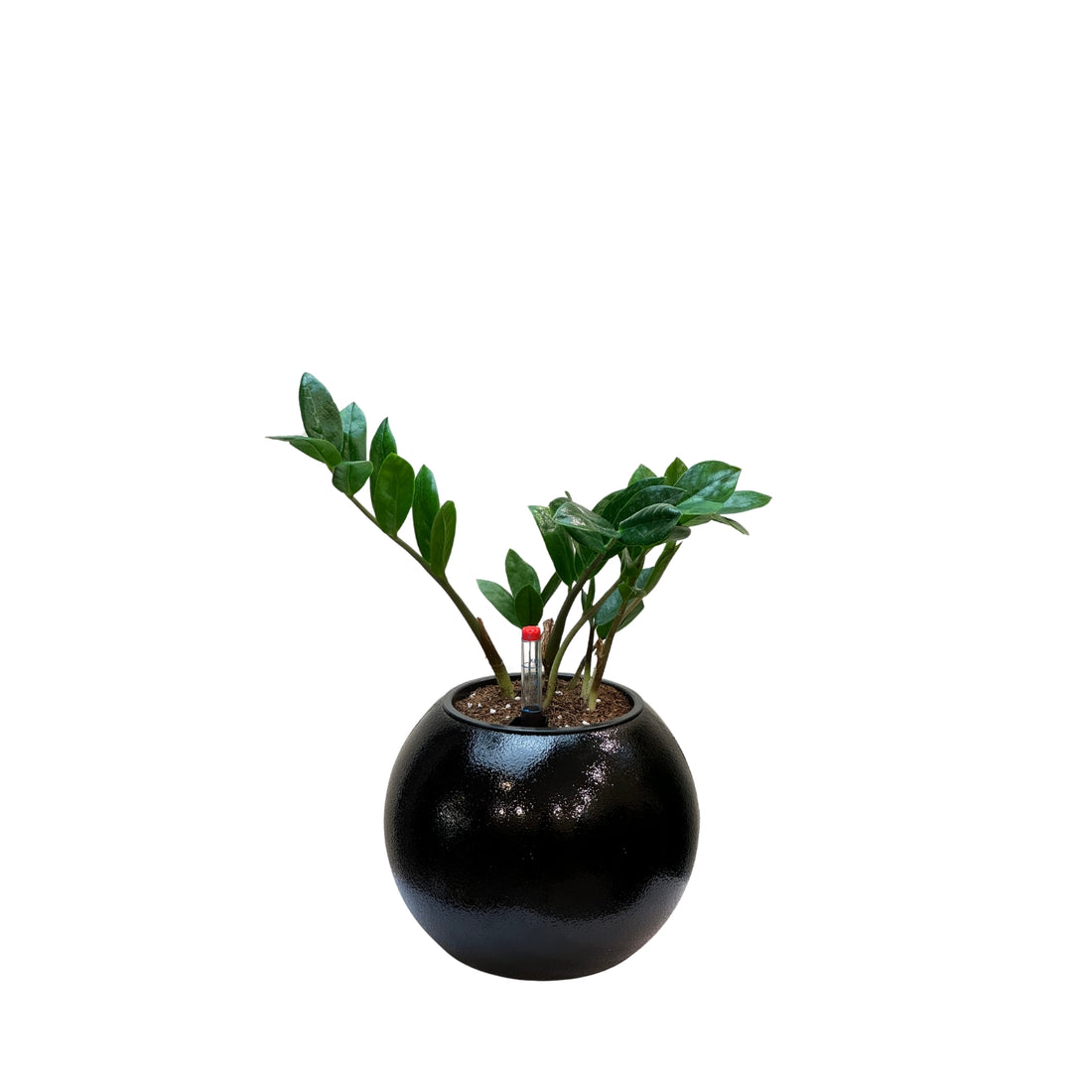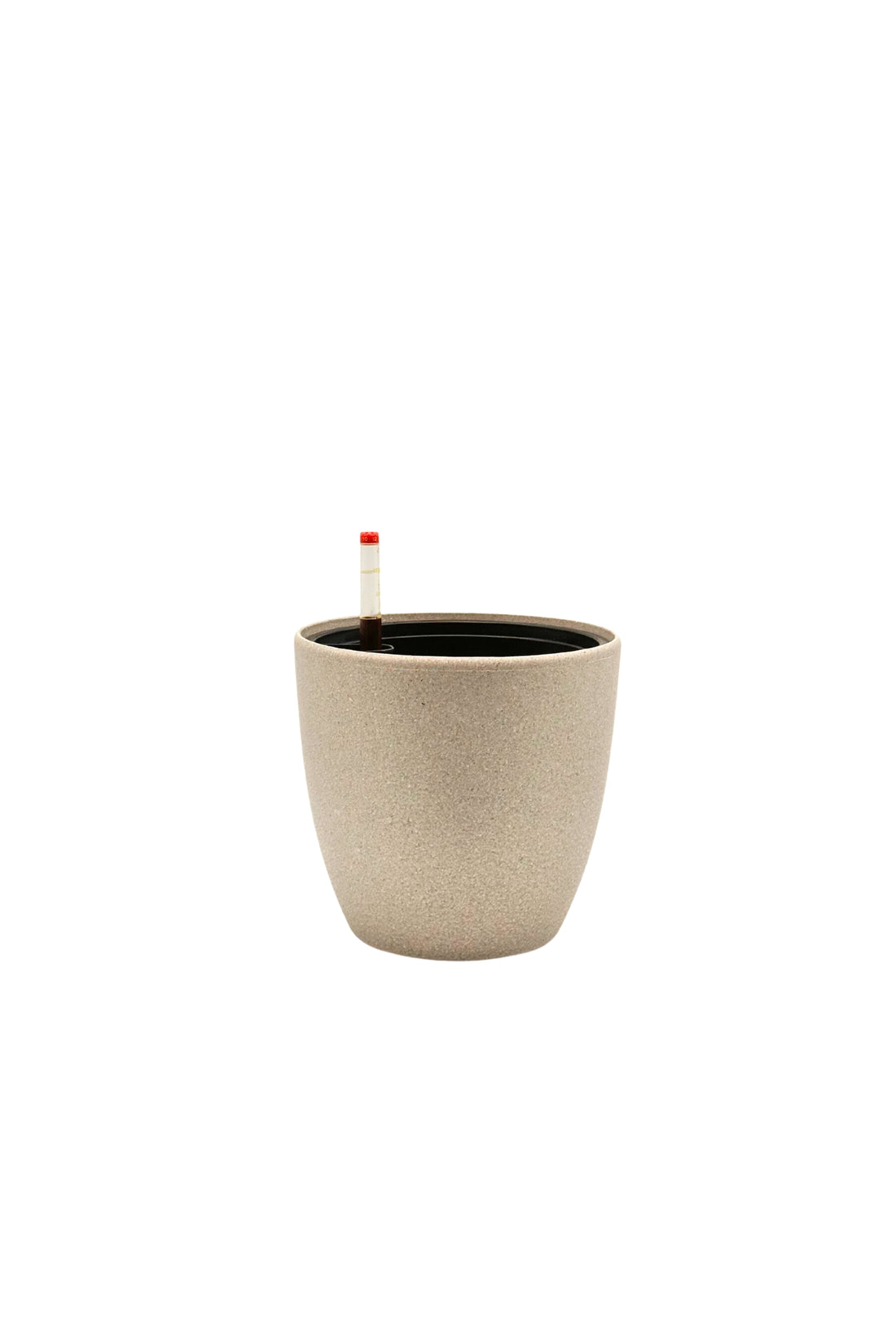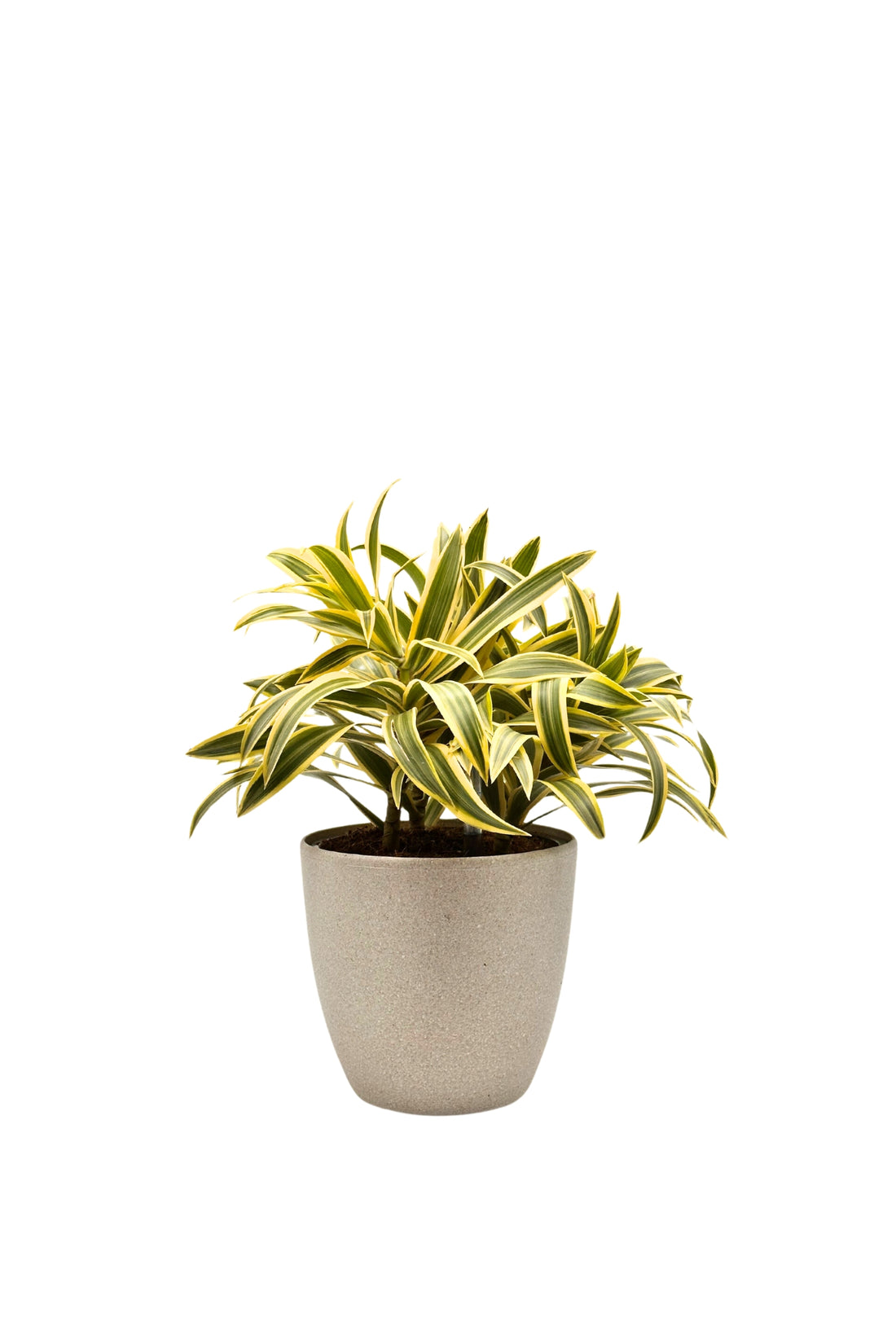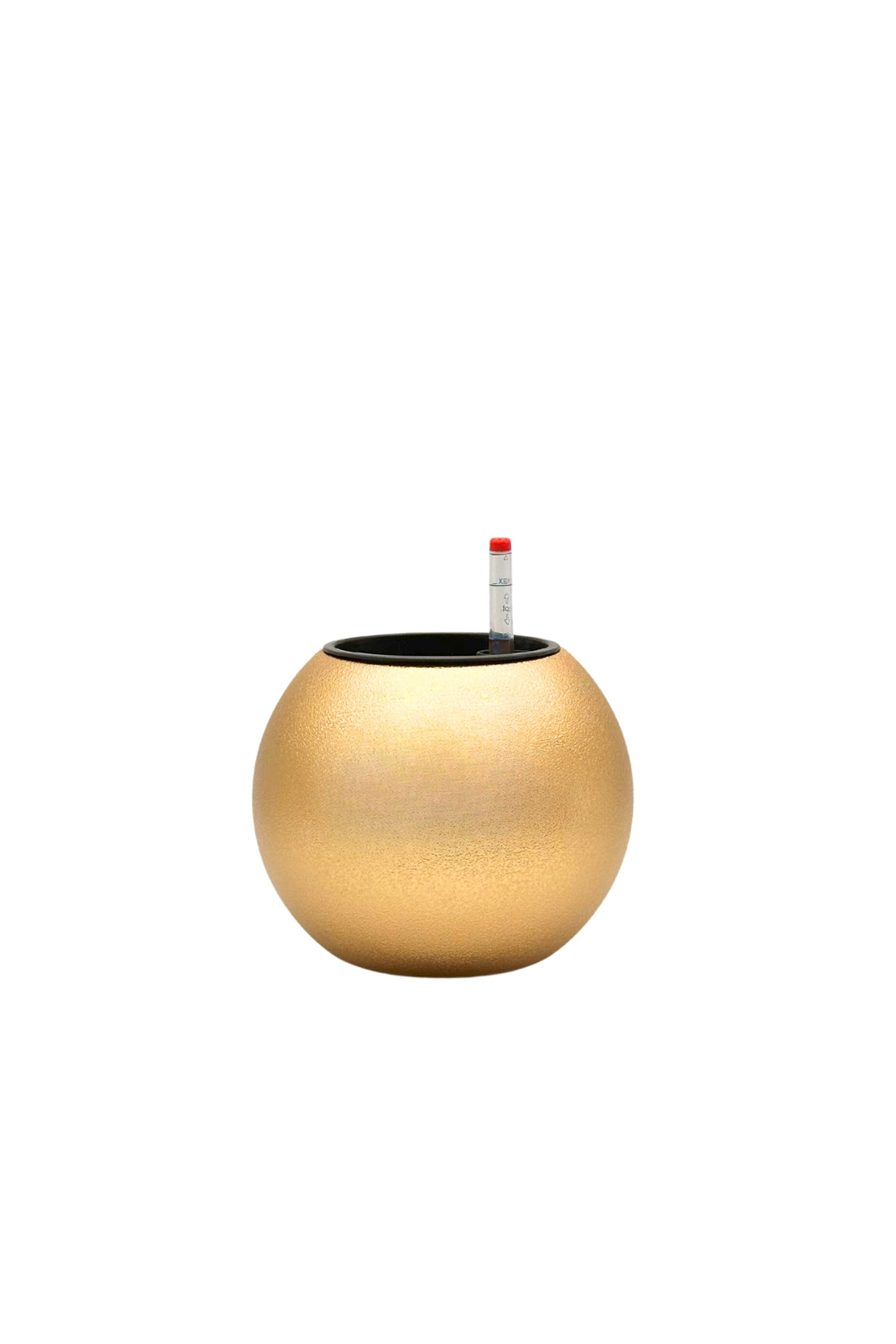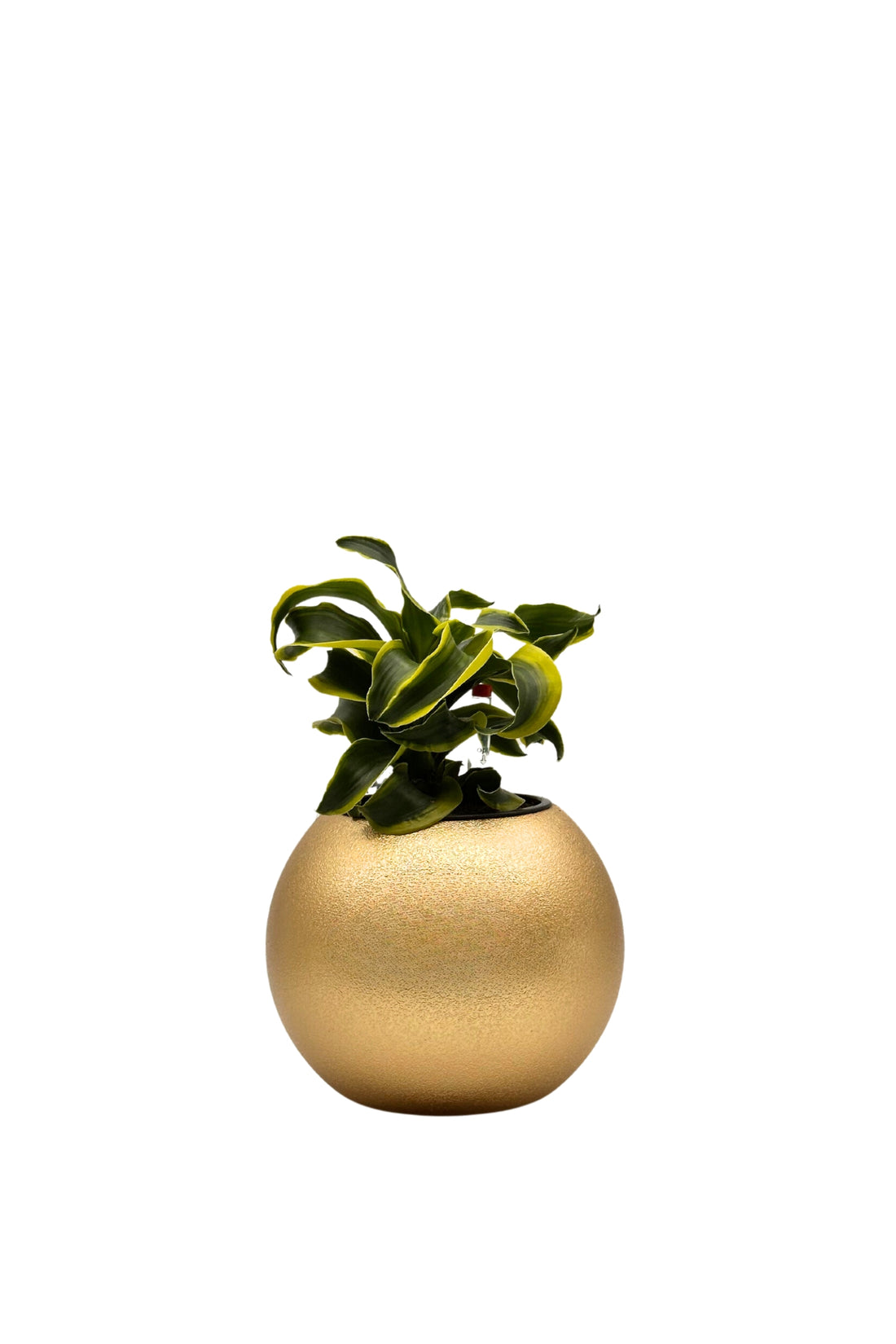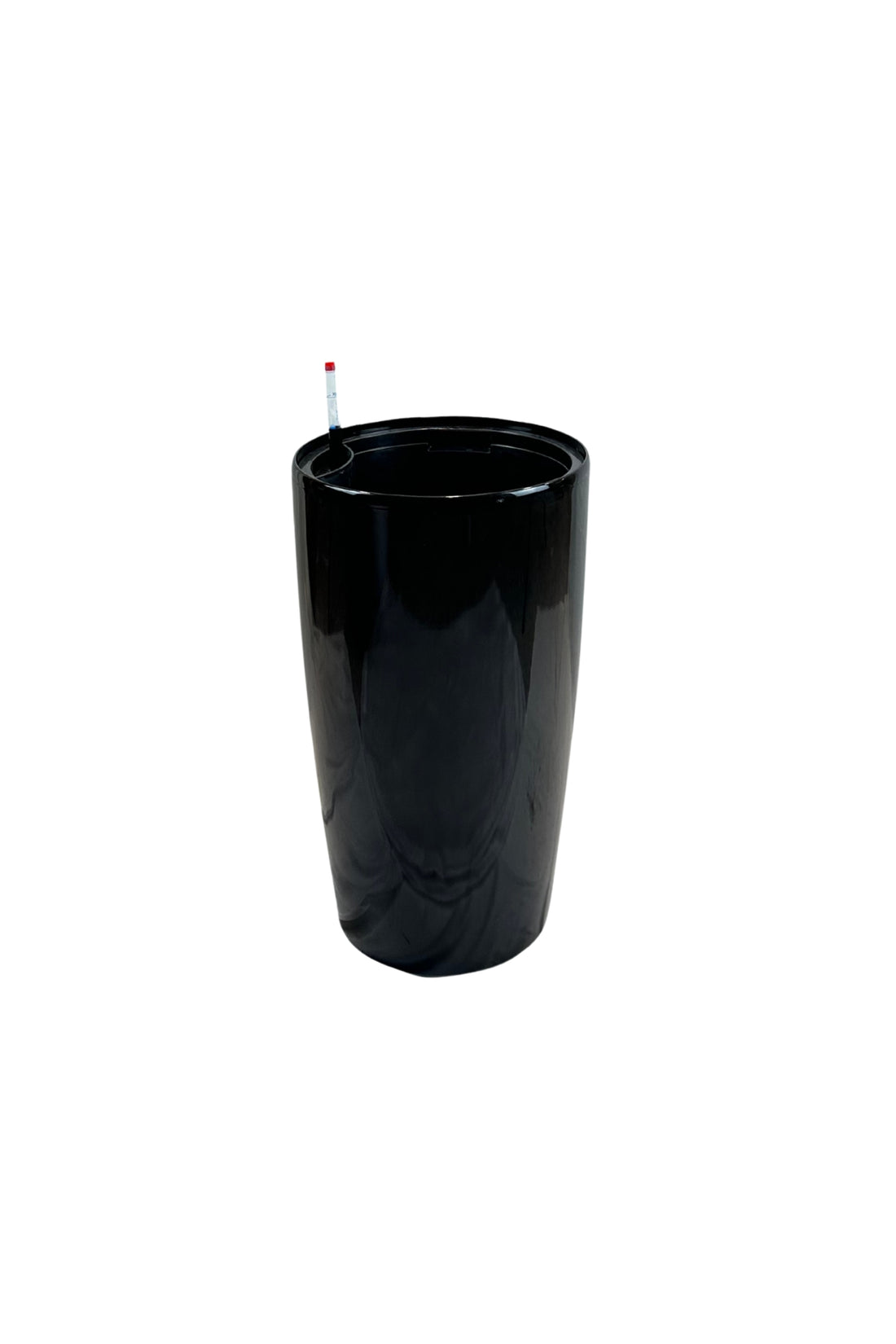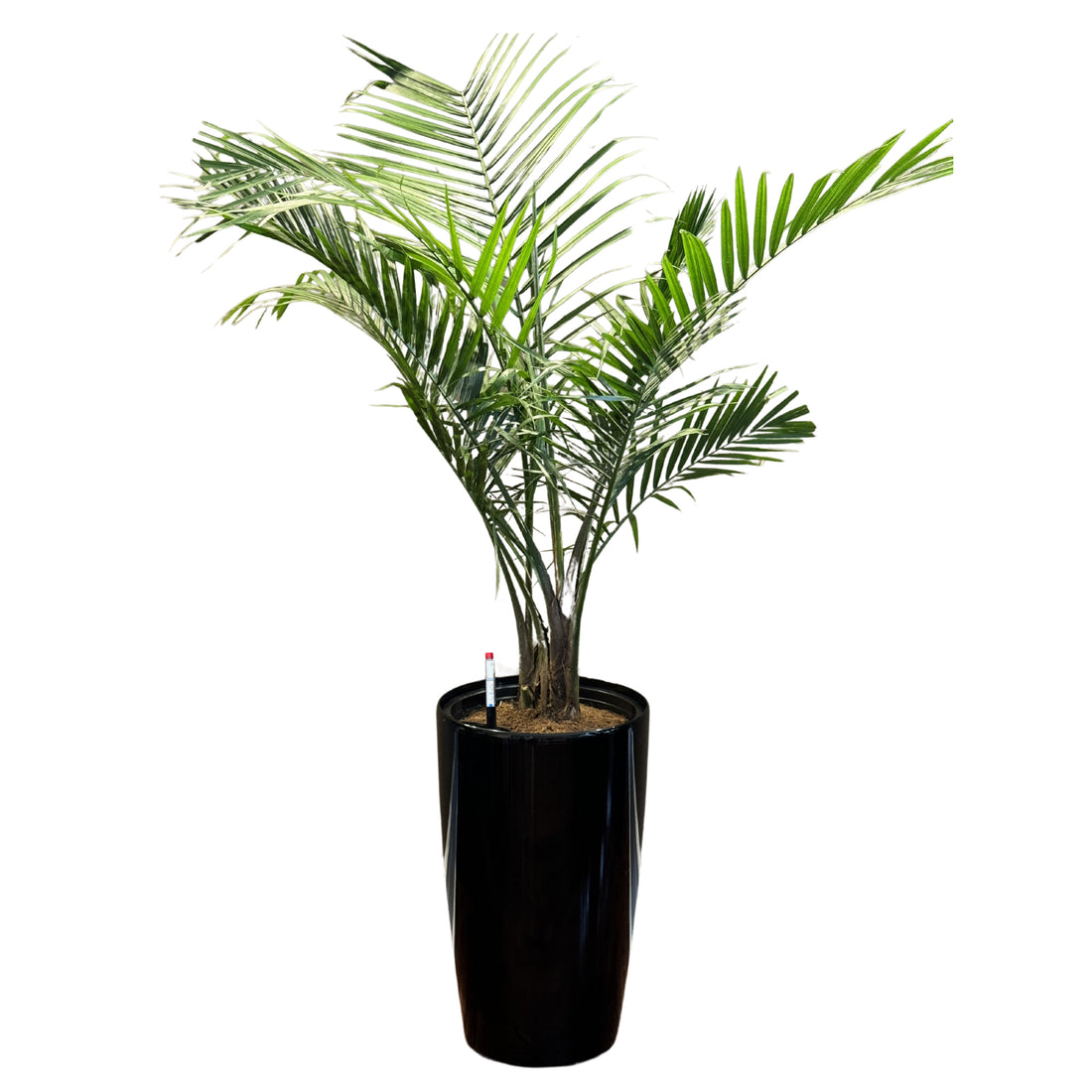Description:
- Foliage: The Peperomia is known for its attractive, marbled leaves. The heart-shaped leaves feature a stunning combination of green and creamy-white patterns, resembling marble.
- Size: Typically grows to a height of 6 to 12 inches, making it a compact and versatile indoor plant.
- Growth Habit: Bushy and low-growing, with a spreading habit. The foliage is often arranged in a rosette pattern.
- Flowers: While Peperomias can produce small, inconspicuous flower spikes, the primary ornamental feature is the foliage.
Plant Care Guide
Light Requirements:
- Thrives in bright, indirect light. Avoid direct sunlight, as it can scorch the leaves.
- Can tolerate lower light conditions but may not exhibit as vibrant colors.
Watering:
- Allow the top inch of the soil to dry before watering.
- Water sparingly, as Peperomias are susceptible to overwatering. Ensure proper drainage to prevent waterlogged soil.
- The use of a self-watering pot can be beneficial for maintaining consistent moisture levels.
Soil:
- Prefers a well-draining potting mix. A mix designed for succulents or cacti is suitable.
- The pH of the soil should be slightly acidic to neutral (around 6.0 to 7.0).
Temperature and Humidity:
- Comfortable in average indoor temperatures ranging from 65-75°F (18-24°C).
- Can tolerate moderate humidity levels, making it adaptable to various indoor environments.
Fertilizing:
- Feed with a balanced, diluted liquid fertilizer every 4-6 weeks during the growing season (spring and summer).
- Reduce or eliminate fertilization during the fall and winter.
Maintenance:
- Prune back leggy stems to encourage bushier growth.
- Remove any yellow or damaged leaves regularly.
- Monitor for pests, such as mealybugs or spider mites, and address promptly.
Propagation:
- Propagate through leaf cuttings, division, or water propagation.
- Leaf cuttings can be rooted in soil or water.
Toxicity:
- Considered non-toxic to pets and humans. However, it's best to keep it out of reach of curious pets and small children.
Special Feature:
- The marbled pattern on the leaves adds a touch of elegance, making it a popular choice for interior decor.
- The inclusion of a self-watering pot simplifies the care routine and ensures optimal moisture levels.
|
Aspect |
Care Tips |
|
Light |
Bright, indirect light; avoid direct sunlight to prevent leaf scorching. |
|
Watering |
Allow the top inch of soil to dry before watering; maintain slightly moist soil. |
|
Soil |
Well-draining potting mix with perlite or sand; suitable for succulents or cacti. |
|
Temperature/Humidity |
65-75°F (18-24°C); moderate indoor humidity is acceptable. |
|
Fertilizing |
Balanced, diluted liquid fertilizer every 4-6 weeks during the growing season; reduce in fall and winter. |
|
Pruning |
Trim back leggy stems to encourage bushier growth; remove yellow or damaged leaves regularly. |
|
Pest Control |
Monitor for pests (e.g., spider mites, aphids) and treat promptly with insecticidal soap or neem oil. |
|
Repotting |
Repot every 1-2 years or when outgrowing its container; use fresh potting mix in a container with drainage holes. |
